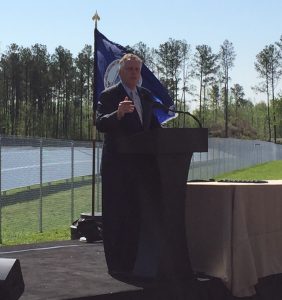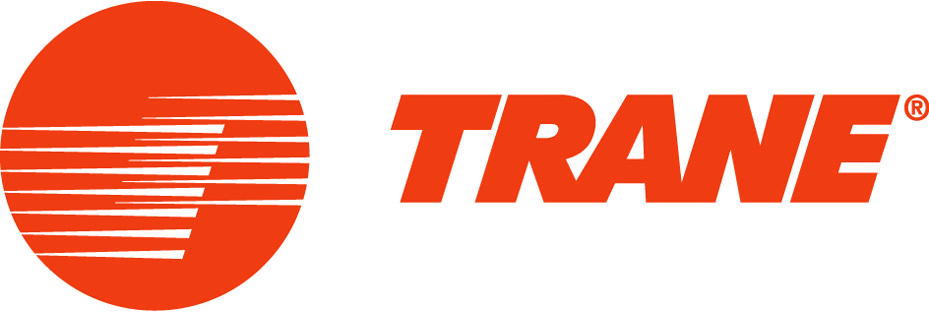The Virginia Department of Environmental Quality (DEQ) is in the middle of a series of informal listening sessions on the U.S. Environmental Protection Agency (EPA) Clean Power Plan to cut carbon emissions (greenhouse gases) from existing power plants that generate electricity from fossil fuels.
The following remarks will be delivered at the Fairfax session tonight by the Chair of VAEEC’s Governance Board; similar remarks have been and will be delivered by Governance Board members at other session. There are three remaining sessions (September 30, 2015, Henrico, VA; October 1, 2015, Big Stone Gap, VA; October 6, 2015, Portsmouth, VA).
“I’m Cynthia Adams, and I am Chair of the Virginia Energy Efficiency Council. I’ve also been appointed by Governor McAuliffe to the Virginia Energy Council and to the Governor’s Executive Committee on Energy Efficiency. In my professional life I’m the co-founder of a business which focuses the residential energy efficiency market. So from all of these perspectives, I am here tonight to advocate for energy efficiency having a central role in Virginia’s Clean Power Plan Compliance.
The Clean Power Plan affords Virginia an opportunity to make sensible energy decisions now that will benefit the Commonwealth for generations to come.
Energy efficiency is one of the primary tools available to help states meet their targets, and when approached from a performance-based perspective can be counted on to lower carbon emissions.
Energy efficiency is the least expensive resource option to meet our energy supply needs. Plus it saves consumers money with lower energy bills.
Energy efficiency is the cleanest option as it represents energy that doesn’t have to be created or consumed, and its implementation reduces multiple pollutants created by other fossil fuel sources.
Energy efficiency is the safest, most reliable option because through demand reduction it improves our energy security by reducing risk and increasing reliability.
Energy efficiency promotes local economic development and job creation. A recent industry census by the Virginia Energy Efficiency Council documented a $2.2 billion energy efficiency industry in Virginia. This industry supports at least 13,000 jobs at more than 500 firms.
The American Council for an Energy Efficient Economy has found that for every $1M spent in building efficiency improvements, 20 jobs are supported. And for every $1M in avoided consumer energy costs, another 17 jobs are supported.
The Virginia Energy Efficiency Council strongly encourages Virginia to include a robust role for energy efficiency in its compliance plan as a way to meet federal guidelines while generating significant economic and environmental benefits for our fellow citizens.
We strongly advocate for a role for the private market to play in helping the state meet its goal, and we stand at the ready to be a resource to the DEQ should the agency have a need.”
At the end of August, VAEEC Executive Director Ken Rosenfeld will be stepping down to pursue other opportunities. We would like to thank Ken for his leadership over the past year and a half as we hosted our largest-yet meetings, grew our membership of industry leaders and ensured that energy efficiency was front and center in discussions about Virginia’s energy future. As we wish Ken the best in his next endeavors, the VAEEC Governance Board asks your help as we hire a new Executive Director to take the helm and work with us to make the VAEEC an even stronger organization.
Please share the job description with your networks. Resumes accepted through August 31.
VAEEC Executive Director Job Description
Cynthia Adams, VAEEC Governance Board Chair
by Ken Rosenfeld, Executive Director
There’s been growing momentum in the past few years for energy efficiency, along with a mounting wave of evidence related to its benefits and its potential. Perhaps that’s why it’s headline-inducing when a piece of news goes in the other direction. That was the case earlier this summer when an economics research paper was released by the University of Chicago. It asked in its title, “Do Energy Efficiency Investments Deliver?” and the report responded with a conclusion that the costs outweigh the benefits.
I hesitate to even mention this paper and bring any additional attention to it, as the research has been quickly, thoroughly and appropriately debunked. But at the same time, it serves as a worthwhile reminder that, despite all of the evidence in support of efficiency programs, we still need to continue making the argument that EE benefits are real.
The paper has clear shortcomings, with a number of questionable assumptions including how to measure costs, what should be included as benefits, and which populations are targeted. The primary danger is that this analysis of one program (the Weatherization Assistance Program) in one state (Michigan) could lead to far-reaching, negative conclusions on EE more broadly.
A number of highly-regarded organizations responded, representing a variety of perspectives, and these blog posts are worth a read:
We’re on the cusp of an energy efficiency moment in the U.S., and that’s particularly the case in Virginia where in just the last year we’ve seen:
- Governor McAuliffe’s formation of a committee to address the state‘s longstanding goal of reducing energy use by 10%;
- The appointment of the country’s first state-level chief energy efficiency officer;
- Bipartisan passage of Property Assessed Clean Energy (PACE) financing legislation; and
- Continued growth of the VAEEC’s membership and the energy efficiency industry – the latest VAEEC census reveals a $2.2 billion EE industry in Virginia supporting more than 13,000 jobs.
However, we haven’t reached the point where we can assume that everyone recognizes the value of energy efficiency, and we have to continue to build this consensus in order to turn the promise of EE into reality. This one research paper may have its faults – and it does — but it has served as a useful call to action.
Monday, August 3, 2015
This afternoon, the U.S. Environmental Protection Agency released its long-anticipated final rule on the Clean Power Plan (CPP), a federal initiative for curbing greenhouse gas emissions from power plants. The CPP calls for a significant reduction in carbon emission from the nation’s power sector – a 32 percent reduction below 2005 levels by 2030. The CPP sets state-by-state targets for emission reductions and allows states to develop their own compliance plans. Details can be found here.
Statement by Ken Rosenfeld, executive director of the Virginia Energy Efficiency Council:
“After much anticipation, the Clean Power Plan is here and the Virginia Energy Efficiency Council (VAEEC) recognizes this as an opportunity to plan for the future and make sensible energy decisions.
While the Clean Power Plan has generated plenty of debate, it’s time now for Virginia to prepare a comprehensive strategy to address the plan’s goals. To that end, the VAEEC strongly encourages Virginia to include a robust role for energy efficiency in its compliance plan. Energy efficiency can help meet the federal guidelines while concurrently generating significant economic and environmental benefits for Virginians.
There are a few specific items in the final rule that deserve particular mention:
- Energy efficiency is no longer specified as a “building block” – a category used by the EPA to calculate the emissions reduction targets. This is a technical change that was reportedly made to address legal concerns, but it’s important to note that it does not affect the significance of energy efficiency as one of the primary compliance tools available to states to meet their targets.
- It specifically creates a Clean Energy Incentive Program, which offers credits to states that implement energy efficiency programs in low-income communities.
- It allows states to request extensions for submitting their implementation plans, and extends the deadline to begin the compliance period from 2020 to 2022; this development provides the time needed to develop thoughtful and comprehensive plans, and allows for careful consideration of how energy efficiency will be incorporated.
We know that an increased emphasis on energy efficiency needs to be part of any comprehensive approach. Energy efficiency is a rare “win-win” in energy policy, a common sense, nonpartisan, and cost-effective solution:
- It’s the lowest-cost resource option to meet Virginia’s energy supply needs,
- It’s the cleanest option as it represents energy that’s not consumed,
- Through demand reduction it improves our energy system by reducing risk and increasing reliability, and
- It promotes local economic development and job creation – an industry census performed by the VAEEC reveals a $2.2 billion energy efficiency industry in Virginia supporting at least 13,000 jobs at more than 500 firms.
The VAEEC represents a wide range of perspectives, and we look forward to working with the McAuliffe Administration, state agencies, policymakers and our many partners as Virginia devises the best path forward to meeting the Clean Power Plan goals.”
The Virginia Energy Efficiency Council (VAEEC) is a broad coalition working to assess and support innovative programs, policies and best practices that encourage energy efficiency in the Commonwealth and to provide a forum for stakeholder interaction. The VAEEC is a 501(c)(3) nonprofit organization whose membership includes businesses of all sizes, utilities, nonprofit and advocacy organizations, local governments and state agencies. For more information, visit www.vaeec.org.
A guest blog post by Abby Johnson and Josh Doyon, Abacus Property Solutions
You may have heard by now about legislation passed in the 2015 Virginia General Assembly session (and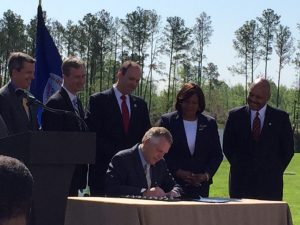 signed into law by Governor McAuliffe) enabling an energy efficiency financing mechanism known as PACE, an acronym for Property Assessed Clean Energy. PACE is an innovative way for commercial property owners to finance energy efficiency and renewable energy improvements in their buildings. In a nutshell, where localities set-up PACE programs, loans provide 100% funding of total project costs by placing a special assessment lien on the property that the owner repays over time as part of his/her tax bill. These PACE loans are typically financed by capital providers who receive the PACE assessment payment via the local taxing authority.
signed into law by Governor McAuliffe) enabling an energy efficiency financing mechanism known as PACE, an acronym for Property Assessed Clean Energy. PACE is an innovative way for commercial property owners to finance energy efficiency and renewable energy improvements in their buildings. In a nutshell, where localities set-up PACE programs, loans provide 100% funding of total project costs by placing a special assessment lien on the property that the owner repays over time as part of his/her tax bill. These PACE loans are typically financed by capital providers who receive the PACE assessment payment via the local taxing authority.
PACE is unique to other kinds of equipment financing in a number of ways including:
- Longer loan terms of up to 20 years that are based on the equipment life (not lender preferences);
- Projects are cash flow positive – often from Year 1 – as the savings from the energy efficiency upgrades are greater than the annual PACE assessment;
- Loans are non-recourse, as they are property – not borrower – based; and
- As a form of “property tax,” the annual assessment does not become due at the time of sale but instead transfers automatically to the new owner.
From a macroeconomic standpoint, benefits include:
- Stimulation of jobs via increased construction activity, supporting a range of stakeholders such as contractors, product manufacturers, lending institutions, and energy engineers;
- Creation of significant numbers of high performance assets in markets, which attract better quality tenants, thereby raising real estate tax revenue while reducing functional obsolescence of the existing building stock.
PACE legislation is in some stage of development or adoption in more than thirty states and the District of Columbia, and is already thriving in California, Connecticut, Florida and Ohio. Success stories include the landmark Universal Studios Hilton hotel, which used PACE to finance the energy efficiency portion of a larger upgrade project totaling $12 million. The PACE loan – approximately $7 million – was used to replace aging chillers, install water efficient fixtures, install LED lighting and other measures for an estimated first year savings of $800,000. Another example is a project financed through the Toledo-Lucas Port Authority in Ohio to upgrade the One Maritime Plaza property. The Authority used $1.4 million in PACE financing to upgrade the cooling tower, interior lighting, and hot water pumps, reducing annual electricity usage by 48%.
Although it can be a powerful financing tool for larger, well capitalized assets, PACE provides probably the most value for the less comprehensive projects – too small to obtain competitive financing from larger banks or ESCOs and often unable to self-fund the upfront costs. Projects under $250k and even under $100k are coming online all the time for measures such as solar plus LED that provide a great return on investment.
PACE is soon to be implemented in Virginia, as the legislation will go into effect on July 1. Stakeholders in both the public and private sector will begin developing underwriting criteria catered to Virginia. A cohesive “PACE in a box” system that would provide the essential tools for localities to adopt PACE will soon be under development. The coming months will prove to be a busy time in the world of energy efficiency and renewable energy as Virginians will be able to realize the significant benefits that PACE can have on their buildings, portfolios, and communities.
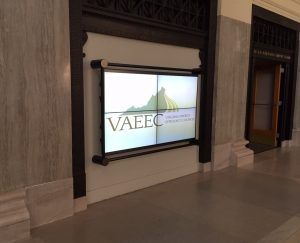
Highlights Include Briefings on New Legislation, Federal Clean Power Plan
The Spring Meeting of the Virginia Energy Efficiency Council attracted an overflow audience on May 11, filling the meeting room at the Science Museum of Virginia in Richmond. Efficiency advocates gathered for the biannual meeting representing a wide variety of perspectives, including business of all sizes, utilities, nonprofits, national associations, local governments and state agencies.
The agenda featured several particularly timely topics, and speakers’ presentations can be found on the VAEEC website on our Resources page. A few highlights from the 2015 Spring Meeting:
- A pair of legislative successes at the General Assembly were prominently featured, starting with a top VAEEC priority: Property Assessed Clean Energy (PACE) financing. VAEEC Board Member Bill Greenleaf of Virginia Community Capital, and Abby Johnson of Abacus Property Solutions, orchestrated the successful campaign and now teamed up again to share the story of how PACE passed in Virginia and how it’s working in other states.
- Another successful piece of legislation, a clarification to the CARE Act that governs natural gas utilities, promises to increase program offerings from the utilities. Gina Slaunwhite of Columbia Gas of Virginia provided background on why the change was needed and what it could mean going forward.
- Mary Shoemaker (pictured at right) of the American Council for an Energy-Efficient Economy (ACEEE) presented the
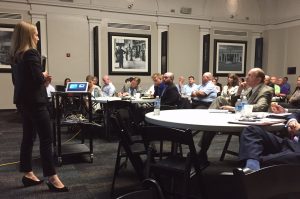 latest details on the proposed federal Clean Power Plan and how it could be addressed in Virginia, with a specific focus on the potential of EE as a cost-effective solution.
latest details on the proposed federal Clean Power Plan and how it could be addressed in Virginia, with a specific focus on the potential of EE as a cost-effective solution.
- VAEEC Board Member Tom Jewell of Dominion Virginia Power moderated our regular meeting feature in which attendees from utilities provide updates on their EE programs; a high number of utilities (electric and gas, investor-owned and coops) were in the room and participated.
- Bob Adams of Housing Virginia shared details of a recent report examining how EE benefits low income and rental housing and highlighted a new coalition under development to promote EE in multifamily housing in Virginia.
The meeting was peppered with many additional updates and announcements, including; a sneak preview of the VAEEC’s latest industry census results; Borna Kazerooni offering updates from Virginia DMME; and Matthew Cooper sharing the exciting news that his Virginia-based firm, PEG, was honored by ENERGYSTAR as a national Partner of the Year.
As always, we greatly appreciate the many individuals who attended the Spring Meeting, traveling to Richmond from across the Commonwealth and beyond. A special thank you to Dominion Virginia Power for sponsoring this year’s Spring Meeting. We look forward to seeing everyone at the Fall Meeting for another opportunity to share information and insights, catch up with friends and colleagues and make new connections.
Four Members Also Serve on VAEEC Governance Board
The Virginia Energy Efficiency Council (VAEEC) is pleased to share the news that today Gov. McAuliffe appointed the members of the new Governor’s Executive Committee on Energy Efficiency. The Committee was created by the governor as part of the Virginia Energy Plan published in October, and it will be chaired by the state’s Chief Energy Efficiency Officer, Hayes Framme. The Committee is tasked with developing strategies to meet the state’s longstanding voluntary goal of reducing energy consumption in Virginia by 10% over 2006 levels by 2022 – a deadline that the governor has indicated should be moved up to 2020.
Statement by Ken Rosenfeld, VAEEC Executive Director:
“The creaton of the Governor’s Executive Committee on Energy Efficiency reflects the administration’s commitment to making energy efficiency a pillar of the Commonwealth’s energy future. The VAEEC applauds Governor McAuliffe for appointing this impressive group to accomplish its important work. The state’s 10% energy efficiency goal has been on the books for years, but without any plan to achieve it. This Committee has enormous potential to move energy efficiency forward in the Commonwealth, and to meet our efficiency goal in a way that generates significant benefits in terms of energy savings, financial savings, and job creation. The roster includes four VAEEC Governance Board members — Cynthia Adams, Bill Greenleaf, David Koogler and Saifur Rahman – and many other VAEEC member organization are represented as well; in total this is a remarkable collection of individuals who understand these issues in great detail. We look forward to working with the Committee to help ensure that every perspective is considered and to support its work in any way possible.”
Read the governor’s announcement.
The full list of appointees to the Governor’s Executive Committee on Energy Efficiency:
- Cynthia Adams of Charlottesville, Executive Director, Local Energy Alliance Program (LEAP)*
- Ken Barker of Richmond, Vice President, Customer Solutions & Energy Conservation, Dominion Virginia Power
- Carol Davis of Blacksburg, Sustainability Manager, Town of Blacksburg
- Jim Fawcett of Charleston, West Virginia, Manager, Energy Efficiency & Alternative Energy Initiatives, Appalachian Power Company
- Bill Greenleaf of Richmond, Loan Officer, Virginia Community Capital, Inc.*
- David Koogler of Hanover, Vice President, Customer Services, Rappahannock Electric Cooperative*
- Angela Navarro of Charlottesville, Staff Attorney, Southern Environmental Law Center
- Michele Peterson of Richmond, Senior Energy Business Consultant, Honeywell
- Bill Prindle of Charlottesville, Vice President, ICF International
- Saifur Rahman of McLean, Joseph Loring Professor and Director, Advanced Research Institute, Virginia Tech*
- William Reisinger of Richmond, Assistant Attorney General, Office of the Attorney General of Virginia
- Dana Wiggins of Richmond, Responsible Lending Coordinator, Virginia Poverty Law Center
*VAEEC Governance Board Member
Governor McAuliffe chose Earth Day 2015 as the fitting time to sign several pieces of clean energy legislation into law, including a pair of bills promoting energy efficiency. The VAEEC was well-represented at the event with a number of member representatives joining the celebration. The new clean energy laws include two VAEEC priorities: Property Assessed Clean Energy (PACE) financing, and a clarification to the Conservation and Ratemaking Efficiency (CARE) Act which regulates the state’s natural gas utilities.
The PACE legislation is the culmination of many years of work to have Virginia join the majority of states that have successfully implemented the program. PACE is a loan program that can be implemented by localities, allowing commercial property owners to finance energy efficiency and renewable energy measures for their properties and repay the loans as special assessments. VAEEC Board Member Bill Greenleaf of Virginia Community Capital spearheaded the successful campaign.
Read the final language.The update to the CARE Act clarifies how efficiency programs proposed by the gas utilities are evaluated by the State Corporation Commission. The change, supported by the utilities and the SCC, promises to result in more robust efficiency program offerings for Virginia customers.
Read the final language.
“The VAEEC thanks the Governor, his Administration, the bill sponsors, and the General Assembly for the great support of PACE financing and the CARE Act fix,” said Ken Rosenfeld, Executive Director of the VAEEC. “Both bills were overwhelmingly passed, reflecting the bipartisan support for energy efficiency in Virginia.”
“PACE financing provides a substantial new option to expand opportunities for commercial property owners. The CARE Act clarification, by providing a better measure of the true cost effectiveness of utility efficiency programs, promises to bring new opportunities to Virginia consumers. These two laws are a significant step forward for energy efficiency in the Commonwealth, and that means lower energy bills, cleaner air and local jobs. We have much more to do to reach the state’s energy goals, but this year’s General Assembly session was a home run for energy efficiency.”
The two new laws will be featured topics of discussion at the VAEEC Spring Meeting, Monday, May 11, 2:00-5:00pm, at the Science Museum of Virginia in Richmond. Register now.

Trane’s Performance Contracting Portfolio consists of healthcare, higher education, laboratories, military bases, local governments, and K-12 schools. Having worked with many PC clients in the Commonwealth, Trane has earned a reputation for responsible project development, quality design and execution, and “getting results” for customers.

Posted by Ken Rosenfeld, VAEEC Executive Director (December 15, 2014)
As 2014 draws to a close, we are fortunate to look back on a year in which energy efficiency began to assume its rightful place as a key resource in Virginia. Thanks to the Virginia Energy Efficiency Council’s members and broad coalition of supporters, we proudly played a leading role in this success and are poised to accomplish much more in the year ahead.
It was an exciting year, highlighted by a couple of significant accomplishments:
- The VAEEC released the results of the state’s first-ever energy efficiency industry census, revealing a robust Virginia industry comprised of 1,300 companies, 9,400 jobs, and $300 million in economic activity.
- We played a central role in the effort to draft the new Virginia Energy Plan, and the VAEEC was the only organization asked by the Administration to present at each of the state’s Listening Sessions during the plan’s development.
The year was also notable for the number of positive signals coming out of the state government in 2014 that bode well for the future, including:
- The new Virginia Energy Plan released by Governor McAuliffe suggests a new commitment to energy efficiency as a resource and a solution to our energy needs. For the first time, energy efficiency/conservation stands alongside other energy resources as a separate chapter in the plan, rather than a sidenote or afterthought.
- The Energy Plan includes the formation of a new energy efficiency board, which will develop strategies for meeting Virginia’s longstanding, voluntary goal of a 10% reduction in energy consumption.
- The Governor issued Executive Order 31, aimed at reducing energy consumption in state buildings, potentially saving millions of dollars and positioning the state government to lead by example, and issued Executive Order 36, creating a Green Community Program that will provide Virginia localities and the private sector with a low-cost financing tool to implement energy conservation projects.
- The Governor also appointed a Chief Energy Efficiency Officer, possibly the first state-level position of its kind in the country, to ensure that positive actions are forthcoming.
Meanwhile, organizationally, the VAEEC continued to establish its presence in 2014 as a valued resource and unique coalition. Our biannual meetings were the most well-attended to date. Our membership is steadily growing. We added a LinkedIn platform where everyone can stay apprised of news and opportunities. And on a personal note, it’s been a privilege to serve as the VAEEC’s first Executive Director, coming on board back in April.
Of course, the horizon is where we are focused. Our positive momentum couldn’t be more timely, as we have several critical opportunities ahead of us:
- Thanks to the establishment of the state energy efficiency board, we finally have a platform to address Virginia’s goal of a 10% reduction in energy use through efficiency and conservation. The goal was to be accomplished by 2022 (10% below 2006 levels), but to this point there has been no statewide plan to meet it.
- The Commonwealth is grappling with how to address the federal Clean Power Plan, which calls for a significant reduction in carbon emissions from the nation’s power sector – a 30 percent reduction below 2005 levels by 2030. VAEEC will be communicating to lawmakers, regulators and others that energy efficiency offers a sensible, low-cost solution.
These are great opportunities, and we know that energy efficiency represents a rare “win-win” in energy policy — a common sense, nonpartisan, cost-effective solution that directly addresses our energy needs while creating significant benefits for the state. It is critical at this time that all Virginians come to a consensus on the need for an increased commitment to energy efficiency.
Fortunately, the VAEEC consists of an incredibly diverse and engaged membership that can accomplish remarkable feats by working together. Our membership is our greatest asset, its strength reflected in its diversity of businesses of all sizes, utilities, nonprofits, universities and local governments.
There is a tremendous amount of work to be done to turn our opportunities into results. But as we close out 2014 proud of the burgeoning energy efficiency industry in Virginia, the momentum coming out of Richmond, and the number and variety of interested parties as reflected in the VAEEC membership, there’s reason for great optimism for the future of energy efficiency in the Commonwealth. Thank you for all that you do, and we look forward to another great year working with you at the VAEEC in 2015.






